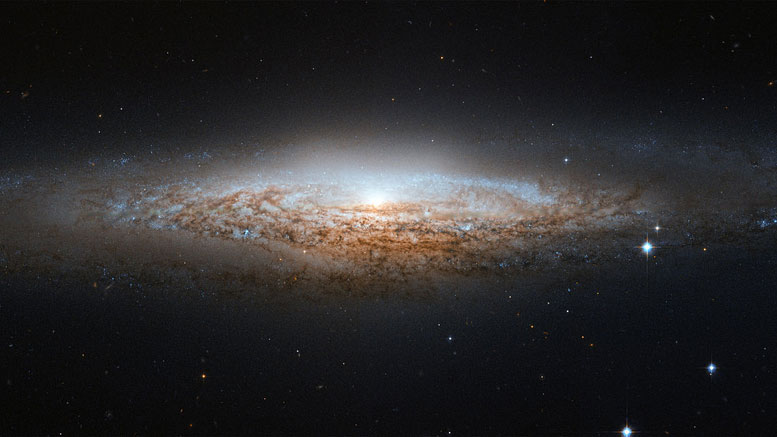Provide the First Detection of Diffuse Hydrogen in a Halo Surrounding the Milky Way

This image of NGC 2683, a spiral galaxy also known as the “UFO Galaxy” due to its shape, was taken by the Hubble Space Telescope. Since trying to find out what the Milky Way looks like is a bit like trying to picture an unfamiliar house while being confined to a room inside, studies like this one help us gain a better idea of our cosmic home. (ESA/Hubble & NASA)
Astronomers from the University of Arizona report the first detection of diffuse hydrogen in a vast halo surrounding the Milky Way.
Sometimes it takes a lot of trees to see the forest. In the case of the latest discovery made by astronomers at the University of Arizona, exactly 732,225. Except that in this case, the “forest” is a veil of diffuse hydrogen gas enshrouding the Milky Way, and each “tree” is another galaxy observed with the 2.5-meter telescope of the Sloan Digital Sky Survey.
After combining this staggering number of spectra — recorded patterns of wavelengths revealing clues about the nature of a cosmic target — astronomers Huanian Zhang and Dennis Zaritsky report the first detection of diffuse hydrogen wafting about in a vast halo surrounding the Milky Way. Such a halo had been postulated based on what astronomers knew about other galaxies, but never directly observed.
Researchers have long known that the most prominent features of a typical spiral galaxy such as our Milky Way — a central bulge surrounded by a disk and spiral arms — account only for the lesser part of its mass. The bulk of the missing mass is suspected to lie in so-called dark matter, a postulated but not yet directly observed form of matter believed to account for the majority of matter in the universe. Dark matter emits no electromagnetic radiation of any kind, nor does it interact with “normal” matter (which astronomers call baryonic matter), and is therefore invisible and undetectable through direct imaging.
The dark matter of a typical galaxy is thought to reside in a more or less spherical halo that extends 10 to 30 times farther out than the distance between the center of our galaxy and the sun, according to Zaritsky, a professor in the UA’s Department of Astronomy and deputy director of the UA’s Steward Observatory.


Comments
Post a Comment